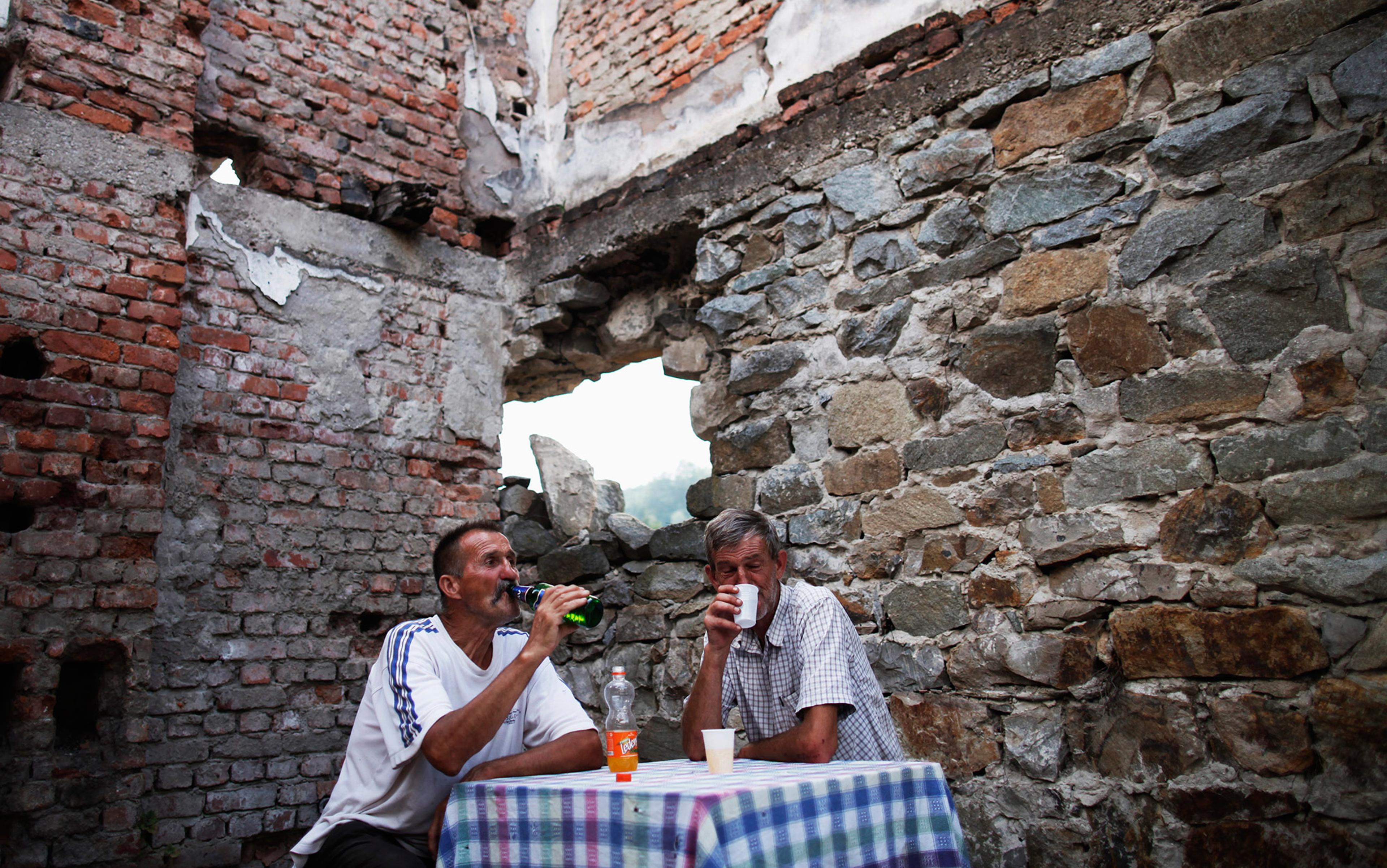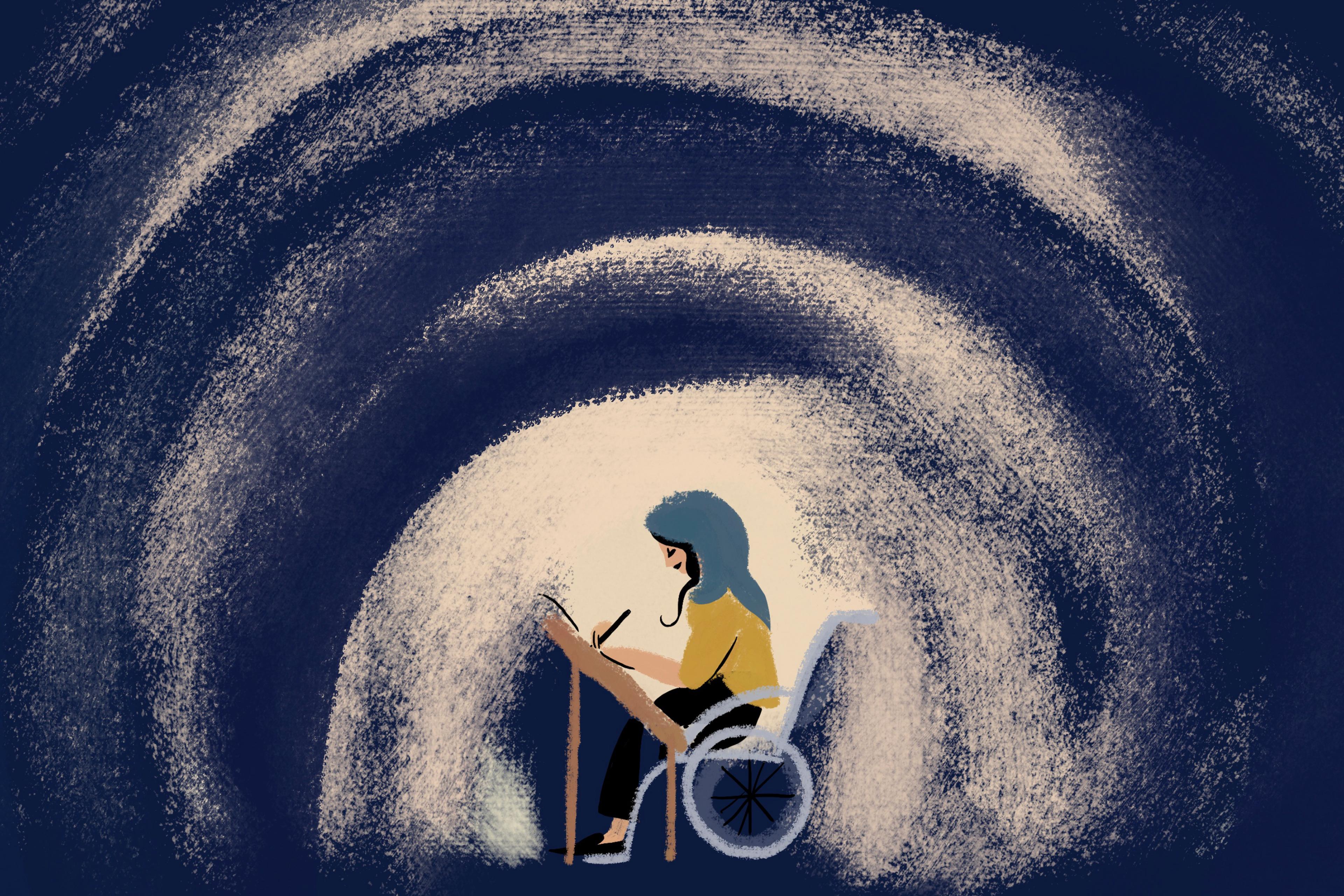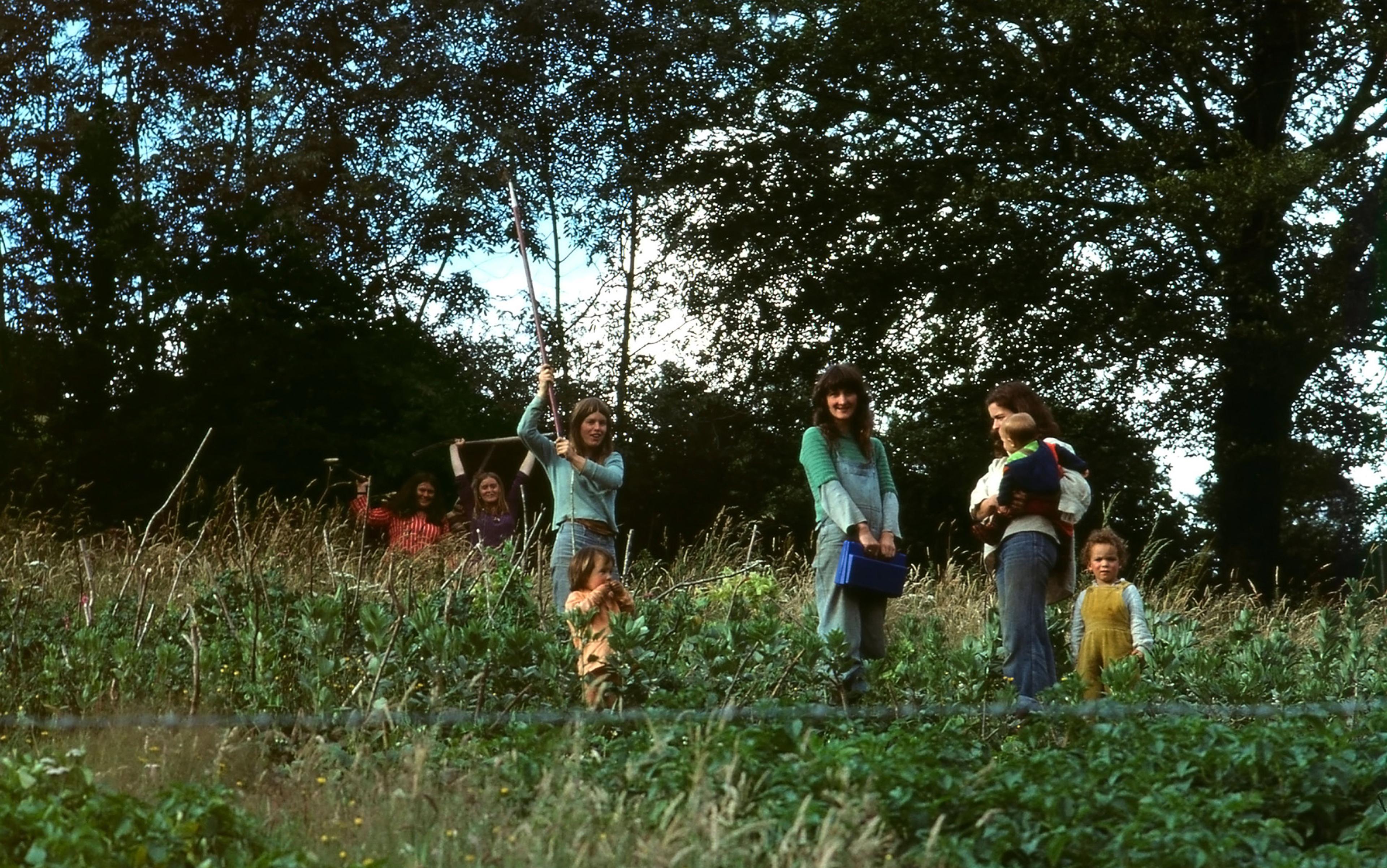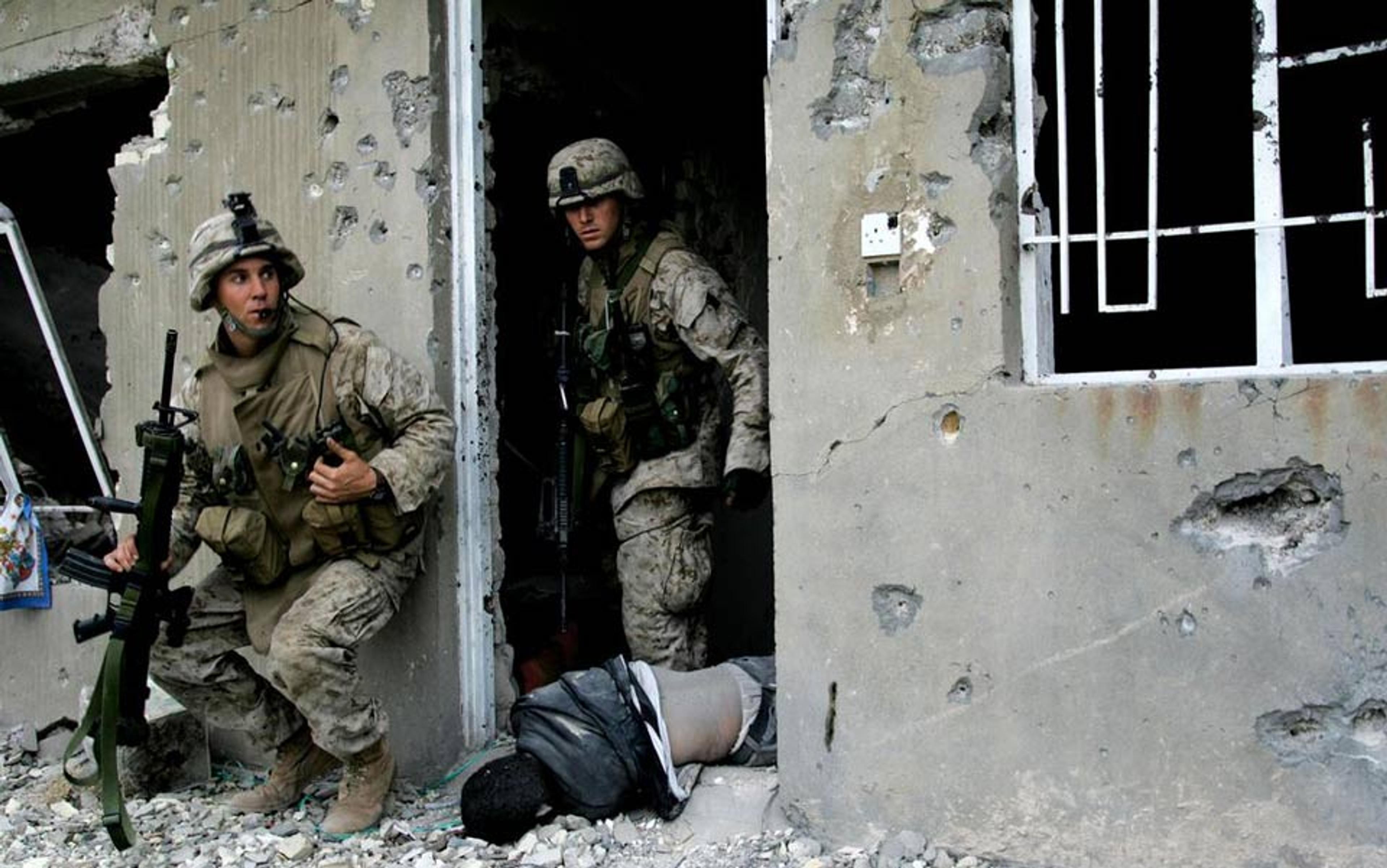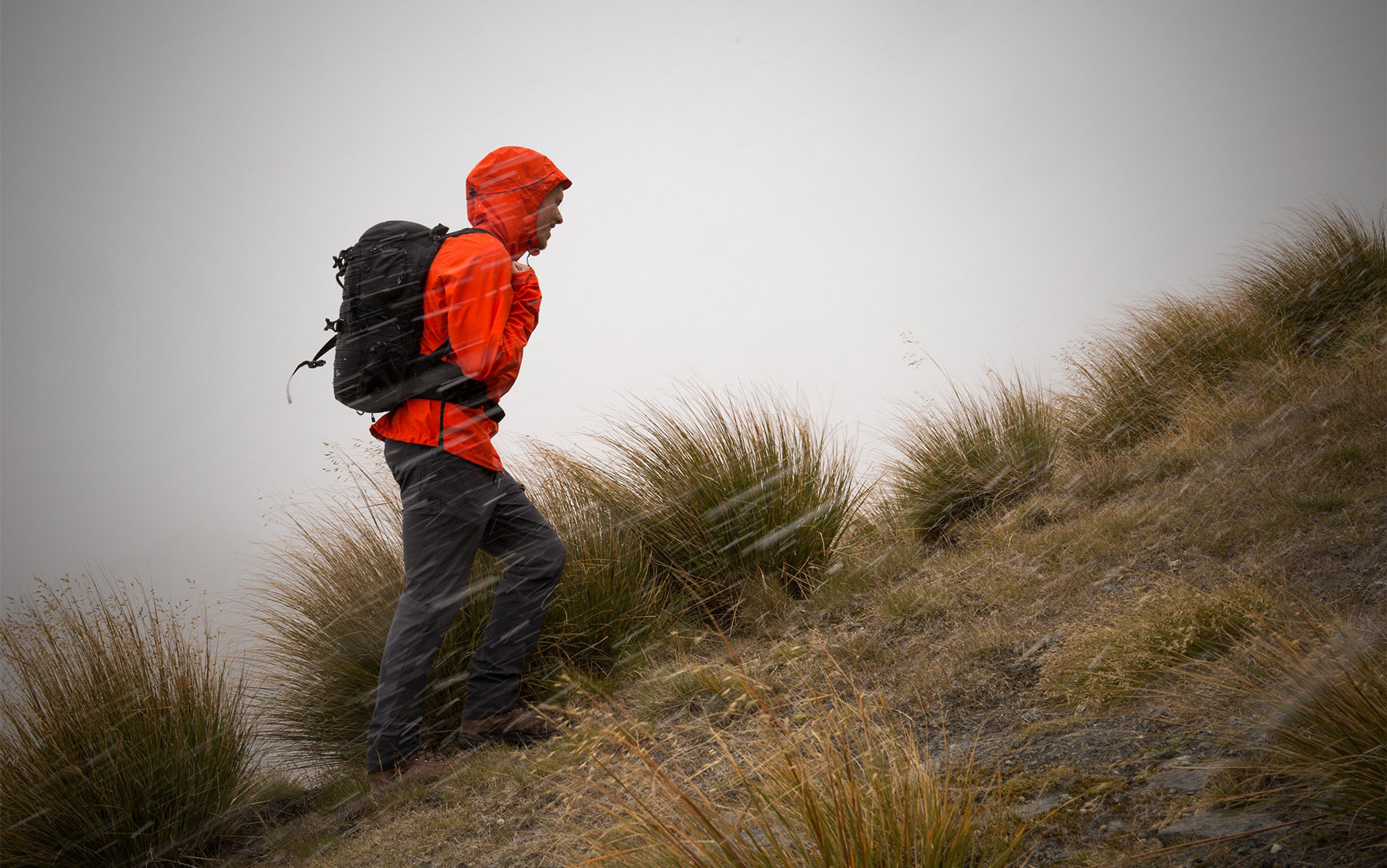At the beginning of the First World War, my grandfather, Gwilym Jones, was a medical orderly and stretcher-bearer at Ypres in Belgium, where some of the fiercest fighting took place. I imagine him, knee-deep in waterlogged trenches, struggling to lift a wounded man or staggering through shell holes, trying not to trip on the rotting bodies of the already-dead. I have to imagine this because he told us just the briefest facts, and those years of immersion in death and dying did not appear to cause lasting mental scars. My father describes him as a happy man with a keen intellect and a passion for education and radical politics. There were no moods or nightmares, and the only time he got drunk was when the Labour Party took over government in 1929. The ability to cope appears to be a family trait: at the height of the Blitz in London, my mother recorded in her diary, with precise detail, the state of her dog’s health and the births of various puppies, but nothing about being bombed.
My relatives were hardly alone. Before the Second World War, experts had worried that bombing might cause widespread panic, but psychiatric casualties turned out to be sparse. A 1941 article in the Journal of Abnormal and Social Psychology described the ‘imperturbability of the majority of the population’ and their remarkable ‘acclimatisation even to heavy raids at night’. The unexpected resilience was chalked up to the standard treatment provided in Britain at the time: when acute psychiatric patients arrived at emergency rooms, they were met with sympathy, given hot tea and reassured that their reactions were due to normal fear shared by the rest of the population. They were told to resist the temptation to exaggerate their experiences and to return to their normal work.
By the time I got to Sarajevo, where I worked as psychiatrist to the besieged population during the Bosnian War in the 1990s, treating attitudes had changed. The predictions of mass psychological casualties were the same. The difference was the interest and attention given to one particular diagnosis – post-traumatic stress disorder, or PTSD – and its potentially dire long-term consequences. Some experts suggested that 1.4 million Bosnians had PTSD, which was bound to be the main public health issue for a generation.
PTSD was unrecognised in the 1970s, when I was a medical student in the UK. In line with the newly revised ninth edition of the International Classification of Diseases, we were taught to recognise acute reactions to stress, which could take the form of strong emotions such as panic, fear or depression, or behaviour disturbance such as agitation, or fugue states in which the person appeared numb, absent or dazed. Back then, I was quite unaware of the lobbying going on in the US, where Vietnam veterans and Holocaust survivors had already found common ground with victims of rape and sexual abuse. Along with their doctors, they argued that diagnoses such as depression, anxiety, substance abuse or personality disorder neither encompassed their problems nor addressed their needs.
To address the issue, physicians advocated inclusion of an entirely new disorder in the soon-to-be-released third edition of the Diagnostic and Statistical Manual of Mental Disorders, or DSM III. A diagnosis of PTSD could be made only if someone had been exposed to a psychologically distressing event outside the normal range of human experience. The identifying symptoms included some kind of re-experiencing of that event in the form of nightmares, intrusive thoughts or flashbacks and increased alertness and jumpiness. Consequently, the patient would try to avoid situations, persons or conversations that might remind them of the event and trigger these frightening episodes. Avoidance might also be accompanied by numbing of the emotions. The patient might complain that they no longer felt anything.
The first time I heard the term PTSD was in 1985 when some psychologist colleagues rushed to provide counselling after a stadium fire killed 56 football fans and injured more than 200 in the English town of Bradford. Then suddenly PTSD was everywhere. A flash fire killed 31 people at King’s Cross Station in London; a plane fell out of the air onto the small Scottish town of Lockerbie, killing all 259 on board and 11 on the ground; police mismanaged the crowd at a football match in Sheffield and 96 people were crushed to death. On every occasion, the reassuring voice of the newscaster explained that professional counsellors were on hand.
I was curious at the growing hold that this one diagnosis, PTSD, had on the professional and public imagination. PTSD appeared to be taking hold of the professional and public imagination even when it did not apply. Perhaps it was because PTSD was a diagnosis without stigma. The rise of biological psychiatry and its focus on mental illnesses as ‘brain diseases’ had failed to remove the taint of moral and personal failing associated with the majority of psychiatric disorders. But here was a disorder that came packaged with a clear-cut cause that was obviously not the patient’s fault, and which set them in the sympathetic and dramatic light of victimhood. Here was a diagnosis that could be taken as a badge of suffering.
Researchers invented new instruments to measure the newly described cluster of traumatic symptoms. The predicted rates in different populations and the possible treatments were debated in new journals and discussed at the international meetings of the new societies set up to explore the new diagnosis. The opening up of eastern Europe and the consequences of the Bosnian war provided a ‘wonderful laboratory for our work’, as the Rector of Bergen University in Norway put it to the delegates at the 1993 meeting of the European Society for the Study of Traumatic Stress. The Bosnian psychologists sitting beside me at the meeting winced. They had been flown in from the Sarajevo section of that ‘laboratory’ by UNICEF. By 1994, there were seven humanitarian agencies running counselling centres in Sarajevo. The agency I worked for trained staff to recognise and treat the symptoms of PTSD.
But what immediately struck all of us living under siege at that time was the irrelevance of describing anything as ‘post-traumatic’. One researcher found that almost 94 per cent of displaced Bosnian children living in collective centres met the criteria for PTSD. But he wondered if some of those symptoms might be adaptive in the midst of continuing conflict. The children had been repeatedly shelled during the two-month research period. The hyper-vigilance that made a child startle at a sudden sound might actually keep them alert enough to take cover.
In the late 1990s, I found myself caught up in an increasingly vitriolic debate within the mental health profession. One side argued that the ‘inventors’ of PTSD pathologised normal stress reactions and undermined people’s natural coping abilities; they saw no evidence that counselling treatments worked. On the other side, advocates of the diagnosis insisted that ‘trauma denial’ was preventing millions of sufferers from getting help.
‘To make a drama out of trauma is fully justified,’ wrote the Dutch psychiatrist Fokko de Vries in the Lancet in 1998, defending a counselling programme in Bosnia at the time.
‘Dr Vries alludes variably to suffering and to trauma, as if they were interchangeable. Surely we must be clear that suffering per se is not pathology,’ responded the British psychiatrist Derek Summerfield.
This back-and-forth captured the heart of the issue. PTSD had come to signify all the moral, social and political evils of war. To say that people did not have PTSD appeared, to some, to be saying that they had not suffered.
There was no definitive evidence to prove that prevention occurred, but as with all new treatments, there were many believers
This became clear to me during a post-war mental health conference in Sarajevo. Dr Summerfield had been invited. He suggested that the long-term rates of PTSD in the city might not be all that high. ‘How can you say that?’ a local psychiatrist snapped back. ‘Have you any idea what we have suffered in this city?’
The trouble is that if you reduce the moral, social, economic and political complexities of a conflict to a disease category that can be universally applied, it suggests a simple, technical, medical fix to all the miseries caused. A medical fix gaining in popularity at that time was ‘critical incident stress debriefing’, first developed for firefighters, paramedics and other front line workers exposed to extremely stressful events.
The idea was that a trained facilitator – possibly a co-worker – could help peers process the traumatic event by taking them through a series of structured steps: describe what happened to make the incident come alive; examine thoughts and reactions to the worst part of the event; and, finally, understand the normality of those reactions and master stress-management techniques. This process was supposed to reduce acute distress and prevent the development of later more severe traumatic reactions. There was no definitive evidence to prove that prevention occurred, but as with all new treatments, there were many believers. And it was easy to see why donors funding humanitarian programmes liked it. The method required very little in the way of capital resources, medications or highly specialised staff. Local people could apparently be trained in counselling techniques in a matter of days or weeks. Interventions could be given to whole populations without bothering to sort out who was sick and who was well. Having such a programme showed that something immediate was being done to address misery on a large scale. No need then to engage in the more difficult and awkward questions of how to stop the conflict causing the misery, or how to get justice or reparations for those affected.
At that 1993 Trauma Conference in Bergen, a group of us including the Bosnian psychologists, Dr Summerfield, and myself, had suggested that we adopt a motion stating that ‘we recognise that we have an ethical duty to address not just the effects of massive trauma but also its causes and perpetrators’. The delegates argued that this was ‘too political’. A bland motion condemning all war as bad for one’s mental health was adopted, instead.
By the winter of 1996, I was still trying to work out my own position on PTSD. I had a new job with another international organisation in a small town in southeast Bosnia. Gorazde had been under siege from Bosnian Serb forces for years. The population had lived with scarce food, no running water or power, constant sniping, and regular periods of bombardment. When I arrived, more than a year after fighting ended, the town was still sunk in fog, gloom and mud, an isolated urban enclave, surrounded by former attackers. The story of the war could be seen in the shattered roofs, some with tarpaulin stretched over shell holes; the home-made water wheels still floating on the river Drina that had been used to generate electricity; the footbridge running beneath the main bridge that had given people cover from snipers.
I lived with two other agency staff in one of the three-storey villas huddled between the north side of the river and the wooded hillside. There was electricity, but still no street lights. You took your life in your hands if you walked along the main road at night, hoping you would not break your leg in a pothole, fall in the mud, or get run over by one of the tanks that made up the peacekeeping battalions. There was mass unemployment.
The town had had no psychiatrist for four years, and my job was to run a mental health clinic in the small hospital on the south side of the Drina. The hospital director gave me a room in the freshly whitewashed outpatient clinic. We furnished it with a desk, some chairs and a lockable filing cabinet for notes. After he announced on local radio that I would run clinics on Tuesdays and Thursdays, there was a queue of patients waiting outside the clinic door each morning. They were aged from six to 70 and had problems ranging from sleeplessness to schizophrenia, severe bipolar disorder and Huntington’s disease. Very few had PTSD. Some had had their problems for years. Some were the previously sick and vulnerable, tipped back into illness by the war.
Elderly Mrs Babic had suffered a bout of agitated behaviour before the war, then got depressed. The kidnapping of her son in the middle of the war had made her very agitated again. She’d been sent to Sarajevo and put on antipsychotic medicine, and been quite calm for the past year. But recently, with the war over and her son still not returned, she had stopped eating, sleeping or enjoying coffee with her friends.
The town was drowning in a sea of tranquillisers, delivered by the aid agencies in large quantities during the war
Mrs Babic pulled out a dirty plastic bag that contained a mass of different drugs. There were the antipsychotic drugs from the hospital in Sarajevo, small glass vials of intramuscular diazepam from the local emergency room, the small blue pills a friend had given her, and yet more white pills from a local doctor. She took all of these drugs intermittently but none of them helped. I explained that it was a good idea to take drugs from just one doctor. We made a plan to reduce her antipsychotic drug slowly, and switch her over to antidepressants.
Mrs Babic did not have PTSD, but the ex-soldiers and ex-prisoners who came to see me did. Edin was 32 and had seen his brother die in front of him when a shell exploded, blowing off his legs and half his face, killing him instantly. Edin could not get the picture out of his mind. He had nightmares where the whole thing happened again. In some, his brother had legs and was running after him. In others, the brother was alive and standing on a mine saying: ‘Don’t leave me, I want to go home.’ Edin had drunk a litre of vodka the previous day and seven litres in the previous 10. Alcohol helped him to sleep. In the daytime, he smoked cannabis to calm himself down. Other times, he took diazepam. His girlfriend had dumped him because she thought he drank too much. He did not have a job. Before the war he had thought about being a medical technician or working in a laboratory. Now he sat there, flushed and shaking, pupils widely dilated, his dark hair greasy and flattened, complaining that he felt sick and had stomach pains. He hoped I would give him some more drugs.
Or there was Nedjad, who was imprisoned and tortured for a year by Bosnian Serbs he had once regarded as friends. He had been released, joined the battle, and been wounded in the shoulder. He too had nightmares every night. They were always the same: he was back in prison and being abused. He belonged to an ex-prisoners group. They met and talked about their experiences. These conversations always made him feel worse. He preferred trying to forget the past by listening to music and getting high. He too took diazepam. The town was drowning in a sea of tranquillisers, delivered by the aid agencies in large quantities during the war.
I saw some children with clear cases of PTSD as well. They too had witnessed the death of someone close at hand. Elvira had watched three men blown up at the door of her shelter. One had survived, faceless, and begged her for water. He had bled onto her. Another time, she had been with three friends when they were hit by a grenade. Two had died instantly and a third lost her leg. Elvira had stood helpless in the middle of the street while her friend cried for help. Four years later, she continued to have nightmares every night and woke in tears. In the day, she felt strangely detached. She could not control her moods.
But most of the problems people brought to the clinic simply did not fit this pattern of symptoms. The war had produced many other kinds of difficulties. Sophia stammered since being evacuated and separated from her parents at the outbreak of the war. Amra wet her bed and soiled her clothes at school. Her mother beat her because of this, but even so Amra could not bear to let her mother out of her sight. They lived with three other families in five rooms and could see their old apartment in Kopaci every time they went past on the bus. It was now occupied by Serbs.
The most common problem among the ex-soldiers was chest pain. Bojan arrived at the clinic short of breath and trembling with anxiety. A short chubby man, slightly balding, he sat down and talked without stopping. The problem had begun during the war. After the funeral of a close friend, who had died in fighting, Bojan had collapsed with chest pain. Everyone thought he was having a heart attack. He had been sent to Sarajevo and put in intensive care with chest monitors and blood tests. After a few days, they told him it was his ‘nerves’ and sent him back to his unit in Gorazde. He was angry at doctors who had mishandled his problem and terrified of dying of a heart attack like his father. But he did not have nightmares or tend to relive painful memories from the war. He enjoyed his six-year-old child, his wife, his work; and whatever he had, it was not PTSD.
Some of my colleagues at home argued that the PTSD construct should be adjusted to include all post-conflict reactions, in both adults and children. But the point of a diagnosis is to distinguish problems that require different approaches. What is gained by extending the frame to include different symptom patterns, when all they have in common is exposure to the same supposed triggering event? A patient who has a persistent cough and is diagnosed with pulmonary tuberculosis requires a quite different treatment from a chronic smoker with a cough. If no distinction is made, one may end up giving the psychological equivalent of cough mixture: the ubiquitous, undefined ‘counselling’.
Amra’s bed-wetting responded to tried and tested behavioural methods. She kept a ‘star chart’, pasting little gold stars into it every time she had a dry night. A certain number of stars earned a small reward. I encouraged her mother not to spank her when wet, but to give lots of praise when she was dry. Amra became less clingy, and mother less frantic. Sophia’s stammer got better with music and play therapy. With Nedjad and Edin, I had to find meaningful ways to discuss their experiences and help them make sense of them, so that they no longer needed to drown the memories in drink and drugs. The men with chest pain responded well to a simple mixture of education about the physiology of stress, breathing exercises and relaxation.
The most difficult problem I faced did not fit into any diagnostic categories. It was violence. Mothers in overcrowded collection centres beat their children, drunken husbands beat their wives. Families fought over kitchen space.
I did not know how to assess risk in a town where most young men were angry and had spent the previous four years killing people to survive
One morning, Lejla, 18, told me she was having a nervous breakdown. She and her husband were both refugees from Foca. They shared two rooms with the husband’s sister and her partner, and slept in the kitchen. But the sister accused Lejla of stealing food, and they fought all the time. Lejla’s husband did not stick up for her and threatened to leave. One day, Lejla simply ran outside and jumped in the Drina. Someone pulled her out and brought her to the hospital. They gave her injections of diazepam. I could reassure Lejla that she was not going mad and offer to help mediate the conflict with her family, but I could not offer what she really needed: new accommodation or the possibility of returning home.
The violence was also directed outwards. Nedjad was furious at the local police, who seemed to swagger around in their uniforms while he had no work. There was one in particular he wanted to kill. I let him ventilate his feelings with me and insisted a friend lock up his gun, but I did not know how to assess risk in a town where most young men were angry, resentful, irritable and on drugs of various kinds. They had access to dangerous weapons and had spent the previous four years trying to kill people to survive.
What came across from all these young men was a feeling of waste, betrayal and hopelessness. They felt that nothing was finished. This was neither peace nor war, so there was no point in trying to restart their lives. Who knew when the war might start again? With 90 per cent unemployment in the town, where would they find work? And if they left, where would they go? Anyway, what had they been fighting for if they abandoned the town they had saved?
The atmosphere of uncertainty infected everyone. Everything was not quite worth it. People found it hard to take initiative, make up their minds or take a decision. Simple questions such as ‘What time can you manage an appointment?’ were often met with something I called the Gorazde sigh: a long exhalation of breath, followed by silence and a half smile.
But to call the community traumatised was to do it a gross disservice. It missed the point. The town had not been struck down by some psychopathological post-conflict plague. It was still under social and economic siege. In those first few months of 1997, a bus from Sarajevo to Gorazde was held up at gunpoint, with all the passengers robbed. A man was kidnapped, threatened with execution, then left tied to a tree while his truck was stolen. On another occasion, a truck driver was knocked out after being hit on the head with stone. The Bosnian Serb police refused to let him be moved to hospital until he had paid a 500 Deutschmark fine. Shop owners no longer felt they could bring in goods, children stopped going to sports events, families did not visit their relatives.
The Dayton Peace Agreement of 1995 supposedly guaranteed freedom of movement and the right to return home. It was clear to me that enforcing these provisions would do more than any single mental health programme to address people’s psychological distress. Freedom of movement could jump-start Gorazde’s economy, and break the community’s feelings of isolation. If people could return to the homes from which they had been expelled, they would no longer quarrel over kitchen space.
There were moments when things worked out. Mrs Babic came in one morning and kissed me on the cheek. Her niece told me she was doing the housework and enjoying family life again. There was Alija, a gentle man who had stayed on his farm in the mountains through the war, looking after his infirm parents and supplying the army with food. When the war ended, he had suddenly felt there was no more point to his life and had become deeply depressed and suicidal. I had put him on antidepressants and we met regularly to talk. Things improved slowly. One day, I did a home visit, driving above the river valley between small orchards, meadows and vegetable plots. Alija showed me his beehives and gave me a jar of honey. At the next appointment, I took him to one of the big development agencies to suggest they use him to train others in beekeeping. They loved the idea and so did he. I had never seen him so cheerful.
The same diagnosis was used for children terrified after watching a ghost story on TV and soldiers who had seen their friends blown up or tortured
After my contract was finished, I stayed in Gorazde another year, doing research on how children made sense of the conflict. By now, I had developed an allergy to the word ‘trauma’. When colleagues or friends at home said: ‘Poor you, dealing with all that trauma!’ I had to stop myself snapping back: ‘Please define your terms: are you referring to the events – torture, shelling, kidnapping or whatever – to which people have been exposed? Or are you referring to their reactions to these events? And if the latter, are you talking about their physical or mental reactions? And are you talking about normal or abnormal reactions because that one word is now used for all of the above.’
The revision of the DSM classification in 1994 added to the confusion. The definition of a ‘traumatic event’ was broadened. According to DSM IV, you no longer had to be directly exposed to an extreme stressor that would cause distress in anyone to qualify for a PTSD diagnosis. The stressor could be anything that you personally found extremely distressing. Indeed your exposure might be second-hand. You might have heard about the event from a friend or witnessed it on television. This meant that the same diagnosis was now being used for a woman traumatised by having hot tea spilt over her in a hotel, children who had become terrified after watching a ghost story on TV, and soldiers or civilians who had seen their friends blown up or been raped or tortured in prison.
By 1998, my patients and the town were recovering. Gorazde had brightened and opened up. Houses and apartment blocks were painted in vivid colours; checkpoints had disappeared from the road. A jam factory started up, providing jobs. A sports centre opened, teams came to play, and people were travelling again. One day, Nedjad stopped me in the street and told me how well he felt. He now had a girlfriend. A warm loving relationship had proved the most effective therapy. I sat on the balcony of my apartment by the river and watched children with brightly coloured rucksacks running to school. Apple and lilac bloomed in the garden. Swallows and martins nested in the burned and deserted house next door. My landlord tended his bees. At night you could hear nightingales. You could almost forget there had been a war.
This is an extract from the author’s upcoming memoir, ‘Outside the Asylum’. All names and personal details of patients have been altered to protect identity.
